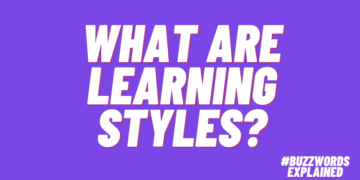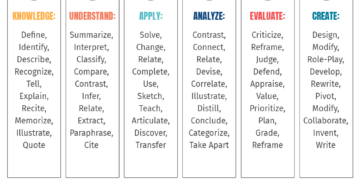Good training data is key for AI models.
Mistakes in data labeling can cause wrong predictions, wasted resources, and biased results. What is the biggest issue? Problems like unclear guidelines, inconsistent labeling, and poor annotation tools slow projects and raise costs.
This article highlights what is data annotation most common mistakes. It also offers practical tips to boost accuracy, efficiency, and consistency. Avoiding these mistakes will help you create robust datasets, leading to better-performing machine learning models.
Misunderstanding Project Requirements
Many data annotation mistakes come from unclear project guidelines. If annotators don’t know exactly what to label or how, they’ll make inconsistent decisions that weaken AI models.
Vague or Incomplete Guidelines
Unclear instructions lead to random or inconsistent data annotations, making the dataset unreliable.
Common issues:
● Categories or labels are too broad.
● No examples or explanations for tricky cases.
● No clear rules for ambiguous data.
How to fix it:
● Write simple, detailed guidelines with examples.
● Clearly define what should and shouldn’t be labeled.
● Add a decision tree for tricky cases.
Better guidelines mean fewer mistakes and a stronger dataset.
Misalignment Between Annotators and Model Goals
Annotators often don’t understand how their work affects AI training. Without proper guidance, they may label data incorrectly.
How to fix it:
● Explain model goals to annotators.
● Allow questions and feedback.
● Start with a small test batch before full-scale labeling.
Better communication helps teams work together, ensuring labels are accurate.
Poor Quality Control and Oversight
Without strong quality control, annotation errors go unnoticed, leading to flawed datasets. A lack of validation, inconsistent labeling, and missing audits can make AI models unreliable.
Lack of a QA Process
Skipping quality checks means errors pile up, forcing expensive fixes later.
Common issues:
● No second review to catch mistakes.
● Relying only on annotators without verification.
● Inconsistent labels slipping through.
How to fix it:
● Use a multistep review process with a second annotator or automated checks.
● Set clear accuracy benchmarks for annotators.
● Regularly sample and audit labeled data.
Inconsistent Labeling Across Annotators
Different people interpret data differently, leading to confusion in training sets.
How to fix it:
● Standardize labels with clear examples.
● Hold training sessions to align annotators.
● Use inter-annotator agreement metrics to measure consistency.
Skipping Annotation Audits
Unchecked errors lower model accuracy and force costly rework.
How to fix it:
● Run scheduled audits on a subset of labeled data.
● Compare labels with ground truth data when available.
● Continuously refine guidelines based on audit findings.
Consistent quality control prevents small mistakes from becoming big problems.
Workforce-Related Mistakes
Even with the right tools and guidelines, human factors play a big role in data annotation quality. Poor training, overworked annotators, and lack of communication can lead to errors that weaken AI models.
Insufficient Training for Annotators
Assuming annotators will “figure it out” leads to inconsistent data annotations and wasted effort.
Common issues:
● Annotators misinterpret labels due to unclear instructions.
● No onboarding or hands-on practice before real work begins.
● Lack of ongoing feedback to correct mistakes early.
How to fix it:
● Provide structured training with examples and exercises.
● Start with small test batches before scaling.
● Offer feedback sessions to clarify mistakes.
Overloading Annotators with High Volume
Rushing annotation work leads to fatigue and lower accuracy.
How to fix it:
● Set realistic daily targets for labelers.
● Rotate tasks to reduce mental fatigue.
● Use annotation tools that streamline repetitive tasks.
A well-trained and well-paced team ensures higher-quality data annotations with fewer errors.
Inefficient Annotation Tools and Workflows
Using the wrong tools or poorly structured workflows slows down data annotation and increases errors. The right setup makes labeling faster, more accurate, and scalable.
Using the Wrong Tools for the Task
Not all annotation tools fit every project. Choosing the wrong one leads to inefficiencies and poor-quality labels.
Common mistakes:
● Using basic tools for complex datasets (e.g., manual annotation for large-scale image datasets).
● Relying on rigid platforms that don’t support project needs.
● Ignoring automation features that speed up labeling.
How to fix it:
● Choose tools designed for your data type (text, image, audio, video).
● Look for platforms with AI-assisted features to reduce manual work.
● Ensure the tool allows customization to match project-specific guidelines.
Ignoring Automation and AI-Assisted Labeling
Manual-only annotation is slow and prone to human error. AI-assisted tools help speed up the process while maintaining quality.
How to fix it:
● Automate repetitive labeling with pre-labeling, freeing annotators to handle edge cases.
● Implement active learning, where the model improves labeling suggestions over time.
● Regularly refine AI-generated labels with human review.
Not Structuring Data for Scalability
Disorganized annotation projects lead to delays and bottlenecks.
How to fix it:
● Standardize file naming and storage to avoid confusion.
● Use a centralized platform to manage annotations and track progress.
● Plan for future model updates by keeping labeled data well-documented.
A streamlined workflow reduces wasted time and ensures high-quality data annotations.
Data Privacy and Security Oversights
Poor data security in data labeling projects can lead to breaches, compliance issues, and unauthorized access. Keeping sensitive information secure strengthens trust and reduces legal exposure.
Mishandling Sensitive Data
Failing to safeguard private information can result in data leaks or regulatory violations.
Common risks:
● Storing raw data in unsecured locations.
● Sharing sensitive data without proper encryption.
● Using public or unverified annotation platforms.
How to fix it:
● Encrypt data before annotation to prevent exposure.
● Limit access to sensitive datasets based on role-based permissions.
● Use secure, industry-compliant annotation tools that follow data protection regulations.
Lack of Access Controls
Allowing unrestricted access increases the risk of unauthorized changes and leaks.
How to fix it:
● Assign role-based permissions, so only authorized annotators can access certain datasets.
● Track activity logs to monitor changes and detect security issues.
● Conduct routine access reviews to ensure compliance with organizational policies.
Strong security measures keep data annotations safe and compliant with regulations.
Conclusion
Avoiding common mistakes saves time, improves model accuracy, and reduces costs. Clear guidelines, proper training, quality control, and the right annotation tools help create reliable datasets.
By focusing on consistency, efficiency, and security, you can prevent errors that weaken AI models. A structured approach to data annotations ensures better results and a smoother annotation process.
TeachThought’s mission is to promote critical thinking and innovation education.




















